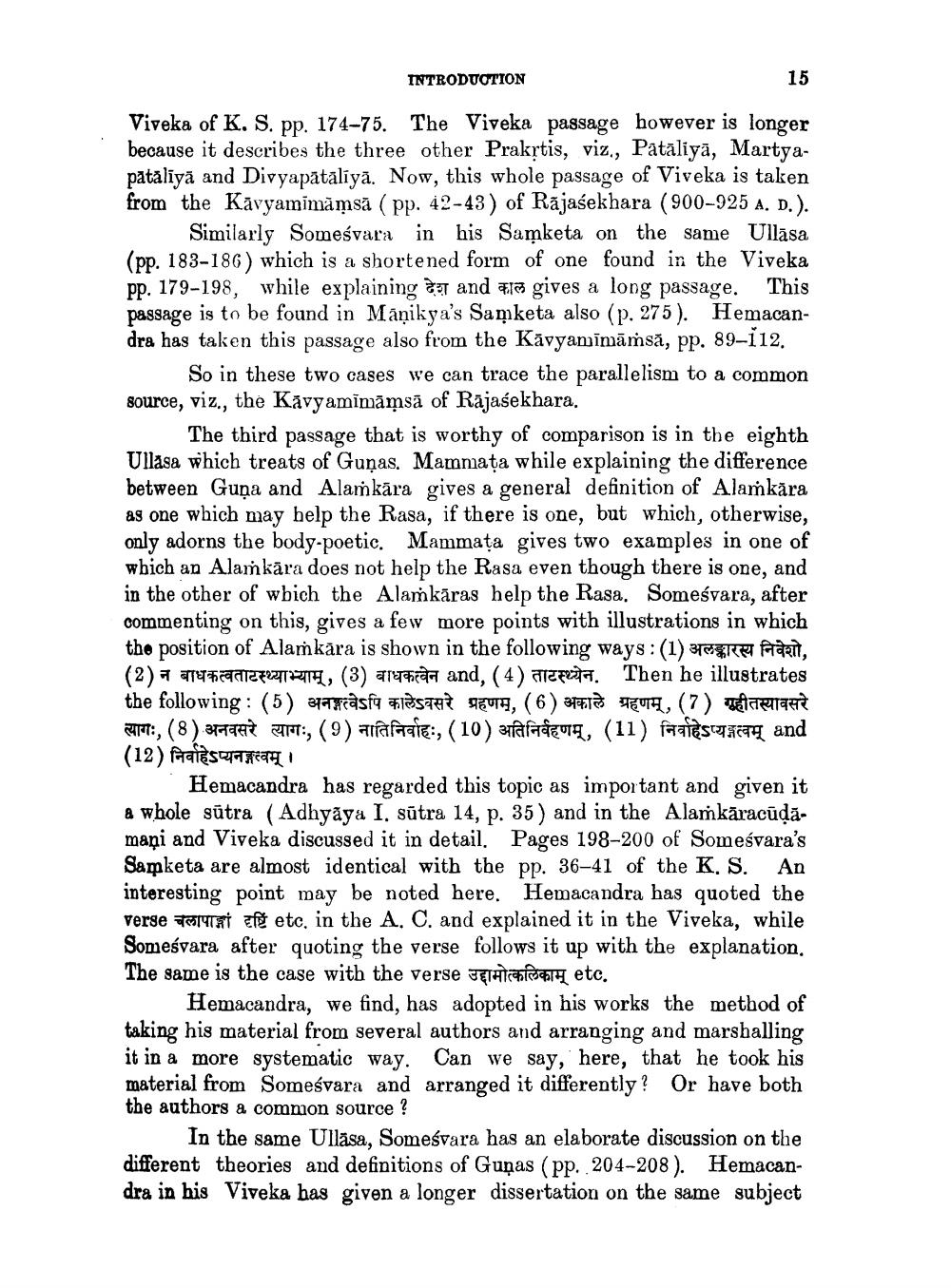________________
INTRODUCTION
15
Viveka of K. S. pp. 174-75. The Viveka passage however is longer because it describes the three other Prakṛtis, viz., Pataliya, Martyapātālīya and Divyapataliya. Now, this whole passage of Viveka is taken from the Kavyamimamsā (pp. 42-43) of Rajasekhara (900-925 A. D.). Similarly Someśvara in his Samketa on the same Ullasa (pp. 183-186) which is a shortened form of one found in the Viveka pp. 179-198, while explaining and gives a long passage. This passage is to be found in Manikya's Samketa also (p. 275). Hemacandra has taken this passage also from the Kavyamīmāṁsă, pp. 89–Ĭ12.
So in these two cases we can trace the parallelism to a common source, viz., the Kavyamīmāmsa of Rajasekhara.
The third passage that is worthy of comparison is in the eighth Ullasa which treats of Gunas. Mammața while explaining the difference between Guna and Alamkara gives a general definition of Alamkāra as one which may help the Rasa, if there is one, but which, otherwise, only adorns the body-poetic. Mammața gives two examples in one of which an Alamkara does not help the Rasa even though there is one, and in the other of which the Alamkaras help the Rasa. Someśvara, after commenting on this, gives a few more points with illustrations in which the position of Alamkara is shown in the following ways: (1) are fail, ( 2 ) न बाधकत्वताटस्थ्याभ्याम्, ( 3 ) बाधकत्वेन and, ( 4 ) ताटस्थ्येन. Then he illustrates the following : (5) अनङ्गत्वेऽपि कालेऽवसरे ग्रहणम्, ( 6 ) अकाले ग्रहणम्, ( 7 ) गृहीतस्यावसरे त्यागः, (8) अनवसरे त्यागः, (9) नातिनिर्वाहः, (10) अतिनिर्वहणम्, ( 11 ) निर्वाहेऽप्यङ्गत्वम् and ( 12 ) निर्वाहेऽप्यनङ्गत्वम् ।
Hemacandra has regarded this topic as important and given it a whole sutra (Adhyāya I. sūtra 14, p. 35) and in the Alamkāracūḍāmani and Viveka discussed it in detail. Pages 198-200 of Someśvara's Samketa are almost identical with the pp. 36-41 of the K. S. An interesting point may be noted here. Hemacandra has quoted the verse etc, in the A. C. and explained it in the Viveka, while Someśvara after quoting the verse follows it with the explanation. The same is the case with the verse
up etc.
Hemacandra, we find, has adopted in his works the method of taking his material from several authors and arranging and marshalling it in a more systematic way. Can we say, here, that he took his material from Someśvara and arranged it differently? Or have both the authors a common source?
In the same Ullasa, Someśvara has an elaborate discussion on the different theories and definitions of Gunas (pp. 204-208). Hemacandra in his Viveka has given a longer dissertation on the same subject




